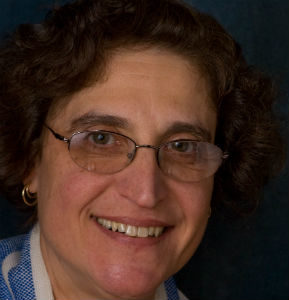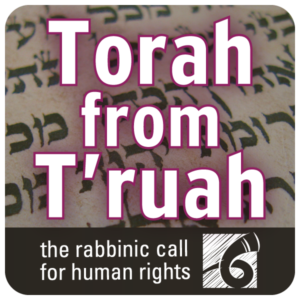Commentary on Parshat Bamidbar (Numbers 1:1-4:20)
Our Torah portion opens with the taking of another census of B’nai Yisrael – the Children of Israel – this time “listed by their clans, ages 20 years and up, all those in Israel who are able to bear arms…” (Num. 1:2) This is census number three since the Exodus, all in less than two years. According to Rashi, the prior two were when B’nai Yisrael departed from Egypt (Ex. 12:37) and after the sin of the Golden Calf, when the Tabernacle was erected (Ex. 30:16 & 38:26) — plus a fourth census when they first arrived in Egypt. (Ex. 1:1)
What’s going on here with all this counting? Midrash Bamidbar Rabbah [II.19] speaks to this question as it describes a man who has all his favorite treasures in a beautiful box. He loves them so much that he opens the box repeatedly just to take out his treasures, examine them, and count them again and again to make sure that they are all there. So, too, does the Eternal count and recount those that are dear and treasured.
Sign up to receive Torah from T’ruah in your inbox each week!
This is a sweet story and is perfect to use as rabbinic comments to b’nai mitzvah students as they stand on the bima each Shabbat Bamidbar. Each student is treasured for who they are and what they have done… and for the Jewish adult they have now become.
Yet… “Why all the counting?” is not the only question this text raises. If each Israelite is treasured, where are the tallies of women and children, and those who cannot bear arms? Don’t they count as well?
 There’s further strangeness here: Nahmanides underscores that the counting was done not by counting each person, but by “recounting/listing their names. Each one was to say his name when he was recorded…” Gersonides adds to the tradition that “they counted the names rather than the men themselves, so that no plague would come upon them through their being counted.” When King David counted his troops directly, this resulted in a plague which killed some 70,000 people – troops and citizens. (ll Samuel, Chapter 24) It does appear that God does not like the people to be numbered directly.
There’s further strangeness here: Nahmanides underscores that the counting was done not by counting each person, but by “recounting/listing their names. Each one was to say his name when he was recorded…” Gersonides adds to the tradition that “they counted the names rather than the men themselves, so that no plague would come upon them through their being counted.” When King David counted his troops directly, this resulted in a plague which killed some 70,000 people – troops and citizens. (ll Samuel, Chapter 24) It does appear that God does not like the people to be numbered directly.
Each census in Exodus seems to point to a specific, distinct purpose. As they left Egypt, they are numbered (Ex. 12:37) “…about 600,000 on foot, the men…”, and in the verse immediately following (Ex. 12:38) this number is distinguished from “the erev rav – the mixed multitude” that left Egypt with them. Here, counting seems to be a way of marking insiders and outsiders. In the second census after the Golden Calf and before the erection of the mishkan (tabernacle) (Ex. 30:16), the men of B’nai Yisrael ages 20 and up were counted yet again – by the use of the half-shekel – seemingly to link them with the sacred work of serving God. . The census that opens Bamidbar is also of males, ages 20 and older, and this time it adds the detail of all those in Israel who are able to bear arms. Now. Moses knows how many are in his fighting force as they make their way to the Promised Land.
So, maybe the question is: Why not just count people? Why use things that stand in for people – like the half-shekel or names?
Perhaps the Torah is teaching us that we need to have something to show as a result of counting. Each half-shekel tallied in the mishkan’s accounting books, each name listed in Bamidbar’s roll book, counts for each individual person and records the existence of that person. One by one, the numbers and the evidence for them add up. Without the evidence, making a case on faulty data could crumble, and the fallout can be disastrous – like a plague.
This process of identifying a specific group of people and numbering them by their names has become very real to me as I help to collect signatures for a petition to get the Safe and Healthy Communities Amendment on the Ohio ballot this November. Under the leadership of Lead Organizer for Reform Ohio Rabbi Lindsey Danzinger, we are working collaboratively with other faith and community organizations collecting 7,500 signatures. Our task is to identify those who are ages 18 and over, who belong to the tribe of “registered voters,” and gather their signatures – name by name – in the specific petition booklets.
In this case of collecting signatures, if the specific number of registered voters is not reached, the crucial evidence for the need to bring this amendment to the state ballot will crumble, and the plagues of the addiction-to-prison and probation-to-prison pipelines will continue.
For Moses and Aaron, numbering their military strength was important knowledge as they made their way on their journey bamidbar – in the wilderness – to the Promised Land.
For the “Justice Warrior Clergy” of Reform Ohio, gathering and numbering petition signatures is important knowledge as we join forces with our partners to help bring positive change to our criminal justice system.
And, in truth, it is ultimately important to know that the tribes, the clans, the leaders, the warriors, the women, the children, the families, the prisoners, the voters – everyone does count and, indeed, is treasured.
____________________
Enid C. Lader is the rabbi at Beth Israel – The West Temple, in Cleveland, Ohio. She was ordained from the Academy for Jewish Religion in New York in 2010, is the current president of the Association of Rabbis and Cantors, and is active in interfaith and community outreach.
Sign up to receive Torah from T’ruah in your inbox each week!

